

Imagining social movements: from networks to dynamic systems. In a world of increasingly tangled social networks, it was inevitable that this would begin to shape how we see social movements.
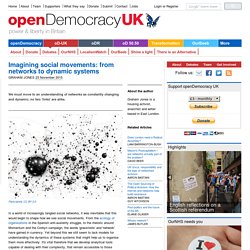
From the ecology of organisations in the Spanish anti-austerity struggle, to the rhetoric around Momentum and the Corbyn campaign, the words 'grassroots' and 'network' have gained in currency. Yet beyond this we still seem to lack models for understanding the dynamics of these systems that might help us to organise them more effectively. It's vital therefore that we develop analytical tools capable of dealing with their complexity, that remain accessible to those outside of niche academic circles.
In his recent article for openDemocracyUK, friend and comrade Liam Barrington Bush goes some way to developing such an analysis. Dynamics One problem with network perspectives that speak in terms of nodes and links is that they paint an overly static picture of how a network operates. Entropy. This Graphic Explains 20 Cognitive Biases That Affect Your Decision-Making. Become a Stronger Leader by Asking Yourself These Three Questions. Communities: the institutions of the 21st century? An interview with Rachel Botsman. Since her influential book about how collaborative consumption is changing the way we live, Rachel Botsman has been a leading actor in the collaborative economy and stimulated important debates about its future.
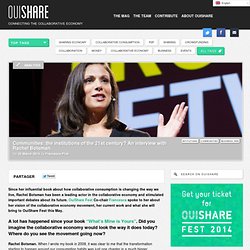
OuiShare Fest Co-chair Francesca spoke to her about her vision of the collaborative economy movement, her current work and what she will bring to OuiShare Fest this May. A lot has happened since your book “What’s Mine is Yours”. Did you imagine the collaborative economy would look the way it does today? Revealed! Secrets of school collaboration. The secret ingredient that makes some teams better than others. Running a software company in Boston, I recognized — and my board told me — that we needed to reposition the business.
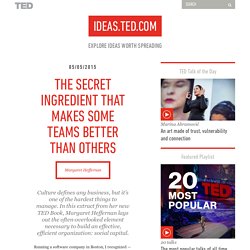
Our product was too bland, too generic to stimulate excitement or loyalty. I needed a team to help me, and I ended up working through the problem with a motley crew: a young web developer, a seasoned and eccentric media executive, a visual artist, and me. Startup Secrets: Mastering the Gift of Mutual Mentorship. Harvard ilab. The modern professional athlete is both an athlete and a business.
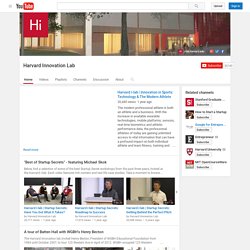
With the increase in available wearable technologies, mobile platforms, sensors, real-time biometrics and athletic performance data, the professional athletes of today are gaining unlimited access to vital information that can have a profound impact on both individual athlete and team fitness, training and performance. A panel of elite current and veteran professional athletes discuss how access to real-time biometric feedback may have changed their strategies for managing their own athletic careers. They also impart their advice for the next generation of youth athletes, and talk about how advances in technology are changing the playing field when it comes to winning games and building careers. The Self Illusion: How Our Social Brain Constructs Who We Are. Why Australia's Collaborative Economy Is Worth $46 billion - B&T.
Unlocking the power of the collaborative crowd is a key solution to Australia’s productivity and innovation challenges according to new Deloitte research commissioned by Google Australia.
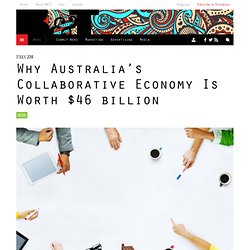
In its Collaborative Economy report, Deloitte Access Economics has put a value on the benefit, and it is big: $46 billion per year – value of faster-growing, profitable businesses with collaboration at their core$9.3 billion per year – value if companies make the most of opportunities to collaborate more. In addition to the economic modelling and research of collaboration’s* place in Australian businesses, 1000 employees and business managers were surveyed – in established markets and new players and across industries and geographies. Other key research findings include: Deloitte Digital national leader Frank Farrall said: “What we have found is a strong correlation between collaboration and the performance of Australian companies. How Consciousness Evolved and Why a Planetary “Übermind” Is Inevitable.
Elizabeth Lesser: Take "the Other" to lunch. On transforming conversations around Indigenous health – #IHMayDay. One of the clear themes from the recent #IHMayDay Twitter-fest was the value of changing the questions asked and the stories told about the health of Aboriginal and Torres Strait Islander peoples.
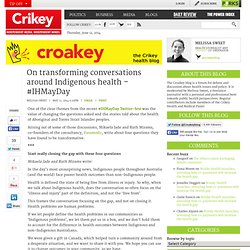
Arising out of some of those discussions, Mikaela Jade and Ruth Mirams, co-founders of the consultancy, Paramodic, write about four questions they have found to be transformative. Start really closing the gap with these four questions. Atul Gawande: How do we heal medicine? James W. Rouse’s Legacy of Better Living Through Design. Otto Scharmer's Blog. 10 insights on the Ego-2-Eco Economy Revolution We live in an age of profound disruption.
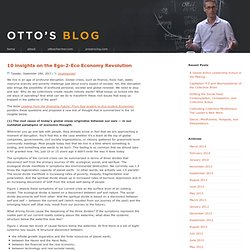
Global crises, such as finance, food, fuel, water, resource scarcity and poverty challenge just about every aspect of society. Yet, this disruption also brings the possibility of profound personal, societal and global renewal. Transformation - How do we get from A to C? - Part 3 - It's the Network! In this short, 3 part series I have been musing about how large organizations will make the shift from Hierarchies to "Wirearchies" (Jon Husband's great insight).
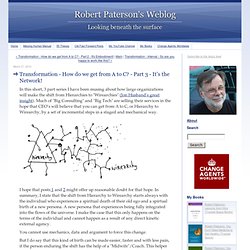
Occupy Your Brain. On Power, Knowledge, and the Re-Occupation of Common Sense photo by Carol Black One of the most profound changes that occurs when modern schooling is introduced into traditional societies around the world is a radical shift in the locus of power and control over learning from children, families, and communities to ever more centralized systems of authority.

While all cultures are different, in many non-modernized societies children enjoy wide latitude to learn by free play, interaction with other children of multiple ages, immersion in nature, and direct participation in adult work and activities. The Human Capacity for Transformational Change: Harnessing the collective mind (eBook) - Taylor & Francis. The Communal State: Communal Councils, Communes, and Workplace Democracy. Posted 6 months ago on Oct. 16, 2013, 9:22 a.m.
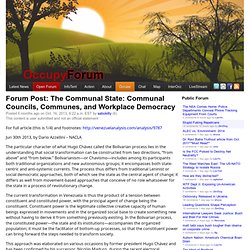
Do you want to be efficient or effective? What is it about the ‘organization’ of the Internet that has allowed it to thrive despite its massive size and lack of hierarchy? The work of identifying which relationships and connections to build and grow and maintain is dispersed to the nodes themselves — and they’re the ones who know which ones to focus on. That’s why the Internet can be so massive, and get infinitely larger, without falling apart. No one is in control; no one needs to hold it together.
John Searle: Our shared condition. Climate Change and Collective Intelligence.